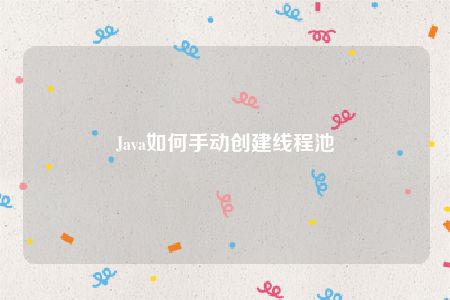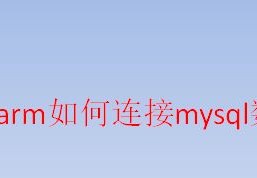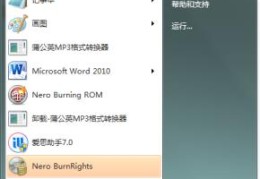目录
- 如何手动创建线程池
- 构造器
- 队列
- 饱和策略
- 示例
- 源码分析
- 线程池工具类
- 实现线程的三种方式
- 使用ThreadPoolExecutor编写线程池工具类
如何手动创建线程池
jdk提供了一个通过ThreadPoolExecutor创建一个线程池的类

构造器
使用给定的参数和默认的饱和策略、默认的工厂方法创建线程池
ThreadPoolExecutor(int corePoolSize, int maximumPoolSize, long keepAliveTime, TimeUnit unit, blockingQueue<Runnable> workQueue)
使用给定的参数和默认的工厂方法创建线程池
ThreadPoolExecutor(int corePoolSize, int maximumPoolSize, long keepAliveTime, TimeUnit unit, BlockingQueue<Runnable> workQueue, RejectedExecutionHandler handler)
使用给定的参数和默认的饱和策略(AbortPolicy)创建线程池
ThreadPoolExecutor(int corePoolSize, int maximumPoolSize, long keepAliveTime, BlockingQueue<Runnable> workQueue, ThreadFactory threadFactory)
使用指定的参数创建线程池
ThreadPoolExecutor(int corePoolSize, int maximumPoolSize, long keepAliveTime, TimeUnit unit, BlockingQueue<Runnable> workQueue, RejectedExecutionHandler handler)
参数说明
corePoolSize线程池的基本大小, 当提交一个任务到线程池的时候,线程池会创建一个线程来执行任务,即使当前线程池已经存在空闲线程,仍然会创建一个线程,等到需要执行的任务数大于线程池基本大小时就不再创建。如果调用线程池的prestartAllCoreThreads()方法,线程池会提前创建并启动所有的基本线程。maximumPoolSizeSize线程池最大数量,线程池允许创建的最大线程数,如果队列满了,并且已创建的线程数小于最大线程数,则线程池会再创建新的线程执行任务。值得注意的是,如果使用了无界的任务队列这个参数就没什么效果。keepAliveTime线程活动保持时间,线程池的工作线程空闲后,保持存活的时间,所以,如果任务很多,并且每个任务执行的时间比较短,可以调大时间,提高线程的利用率。unit线程活动保持时间的单位,可选择的单位有时分秒等等。workQueue任务队列。用来暂时保存任务的工作队列threadFactory用于创建线程的工厂
队列
ArrayBlockingQueue:是一个基于数组结构的有界阻塞队列,此队列按照FIFO(先进先出)原则对元素进行排序DelayQueueLinkedBlockingDequeLinkedBlockingQueue:是一个基于链表结构的有界阻塞队列,此队列按照FIFO排序元素,吞吐量高于ArrayBlockingQueue。静态工厂方法Executors.newFixedThreadPool(n)使用了此队列LinkedTransferQueuePriorityBlockingQueue:一个具有优先级的无限阻塞队列SynchronousQueue:一个不存储元素的阻塞队列。每个插入操作必须等待另一个线程调用移除操作,否则插入操作一直处于阻塞状态,吞吐量要高于LinkedBlockingQueue,静态工厂方法Executors.newCachedThreadPool()使用了此队列
饱和策略
当队列和线程池都满了,说明线程池处于饱和的状态,那么必须采取一种策略处理提交的新任务。这个策略默认是AbortPolicy,表示无法处理新任务时抛出异常
ThreadPoolExecutor.AbortPolicy:直接抛出异常ThreadPoolExecutor.CallerRunsPolicy:只用调用这所在的线程来运行任务ThreadPoolExecutor.DiscardOldestPolicy:丢弃队列里最近的一个任务,并执行当前任务ThreadPoolExecutor.DiscardPolicy:不处理,丢弃掉
示例
public class ThreadPool {
/**
* 线程池的基本大小
*/
static int corePoolSize = 10;
/**
* 线程池最大数量
*/
static int maximumPoolSizeSize = 100;
/**
* 线程活动保持时间
*/
static long keepAliveTime = 1;
/**
* 任务队列
*/
static ArrayBlockingQueue workQueue = new ArrayBlockingQueue(10);
public static void main(String[] args) {
ThreadPoolExecutor executor = new ThreadPoolExecutor(
corePoolSize,
maximumPoolSizeSize,
keepAliveTime,
TimeUnit.SECONDS,
workQueue,
new ThreadFactoryBuilder().setNameFormat("XX-task-%d").build());
//提交一个任务
executor.execute(() -> System.out.println("ok"));
}
}
源码分析
任务执行
public void execute(Runnable command) {
if (command == null)
throw new NullPointerException();
/*
python * Proceed in 3 steps:
*
* 1. If fewer than corePoolSize threads are running, try to
* start a new thread with the given command as its first
* task. The call to addworker atomically checks runState and
* workerCount, and so prevents false alarms that would add
* threads when it shouldn't, by returning false.
*
* 2. If a task can be successfully queued, then we still need
* to double-check whether we should have added a thread
* (because existing ones died since last checking) or that
* the pool shut down since entry into this method. So we
* recheck state and if necessary roll back the enqueuing if
* stopped, or start a new thread if there are none.
*
* 3. If we cannot queue task, then we try to add a new
* thread. If it fails, we know we are shut down or saturated
* and so reject the task.
*/
int c = ctl.get();
if (workerCountOf(c) < corePoolSize) {
if (addWorker(command, true))
return;
c = ctl.get();
}
if (isRunning(c) && workQueue.offer(command)) {
int recheck = ctl.get();
if (! isRunning(recheck) && remove(command))
reject(command);
else if (workerCountOf(recheck) == 0)
addWorker(null, false);
www.cppcns.com }
else if (!addWorker(command, false))
reject(command);
}
参考文档
https://docs.oracle.com/Javase/8/docs/api/java/util/concurrent/ThreadPoolExecutor.html
线程池工具类
实现线程的三种方式
1.继承 Thread 类
2.实现Runnable 接口
3.实现 Callbale接口和Future接口实现
4.三种方式比较:
继承Thread 类 编程简单,可扩展性差。
实现接口方式 可扩展性高,编程复杂。
使用ThreadPoolExecutor编写线程池工具类
1.线程创建方式,实例化贤臣池时,创建核心线程,
2.当任务大于核心线程时将进入阻塞队列
3.当阻塞队列满时,任务没有超过最大线程时创建新的线程
4.当任务 > 最大线程数+阻塞队列 时,执行拒绝策略。
public class ThreadPoolUtils {
public stat恰卡编程网ic ThreadPoolExecutor pool=null;
// 无响应执行
public static void execute(Runnable runnable){
getThreadPool().execute(runnable);
}
// 有响应执行
public static<T> Future<T> submit(Callable<T> callable){
return getThreadPool().submit(callable);
}
// 创造线程池
private static synchronized ThreadPoolExecutor getThreadPool(){
if(pool==null){
// 获取处理器数量
int cpuNum = Runtime.getRuntime().availableProcessors();
// 根据cpu数量,计算出合理的线程并发数
// 最佳线程数目 = ((线程等待时间+线程CPU时间)/线程CPU时间 )* CPU数目
int maximumPoolSize = cpuNum * 2 + 1;
// 七个参数
// 1. 核心线程数
// 2. 最大线程数
// 3. 空闲线程最大存活时间
// 4. 时间单位
// 5. 阻塞队列
// 6. 创建线程工厂
// 7. 拒绝策略
pool=new ThreadPoolExecutor(maximumPoolSize-1,
maximumPoolSize,
5,
TimeUnit.SECONDS,
new ArrayBlockingQueue<>(50),
Executors.defaultThreadFactory(),
new ThreadPoolExecutor.AbortPolicy());
}
return pool;
}
}
以上为个人经验,希望能给大家一个参考,也希望大家多多支持我们。
海报
0 条评论
65
相关文章
本站已关闭游客评论,请登录或者注册后再评论吧~






